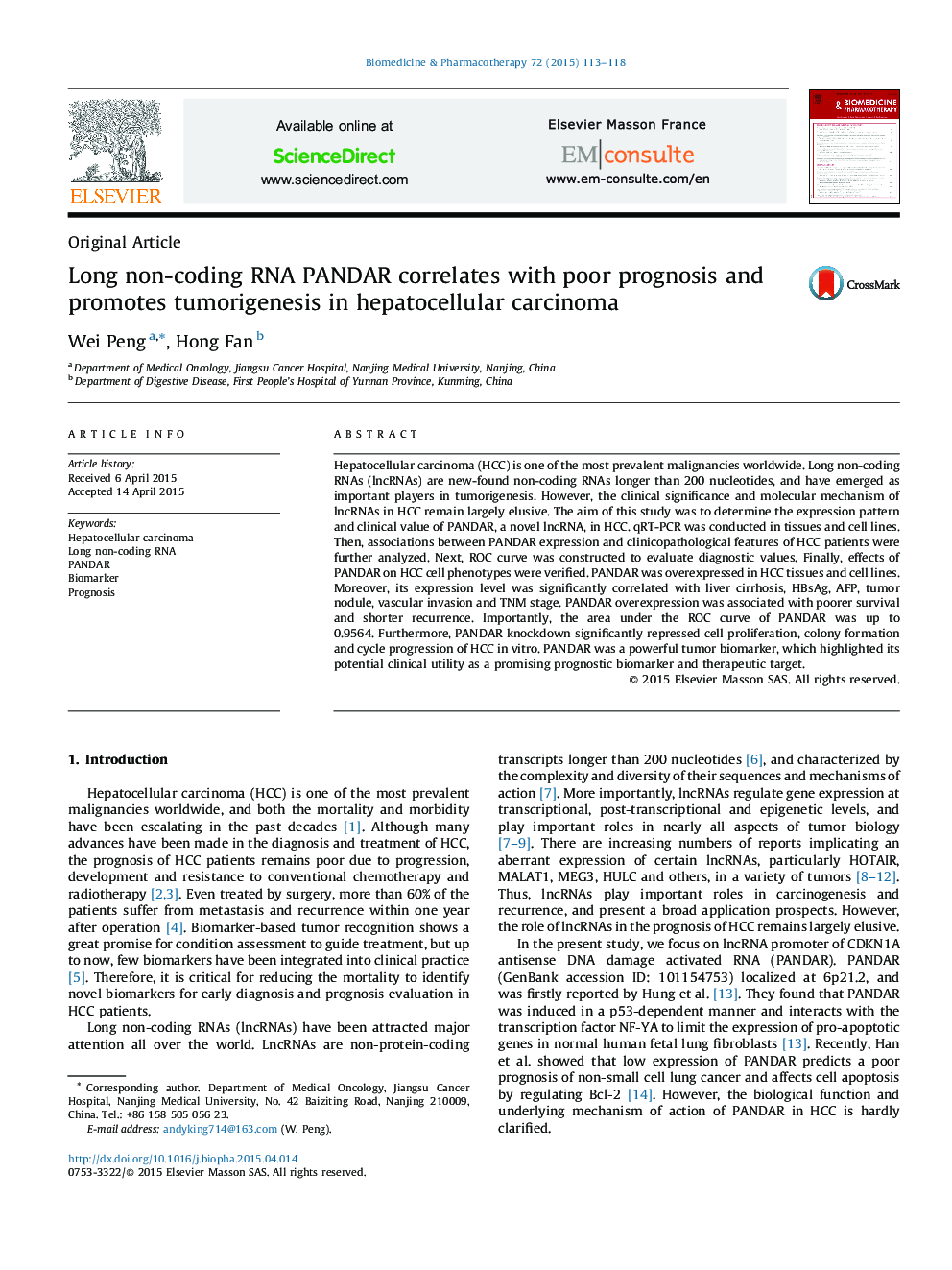| Article ID | Journal | Published Year | Pages | File Type |
|---|---|---|---|---|
| 2523959 | Biomedicine & Pharmacotherapy | 2015 | 6 Pages |
Hepatocellular carcinoma (HCC) is one of the most prevalent malignancies worldwide. Long non-coding RNAs (lncRNAs) are new-found non-coding RNAs longer than 200 nucleotides, and have emerged as important players in tumorigenesis. However, the clinical significance and molecular mechanism of lncRNAs in HCC remain largely elusive. The aim of this study was to determine the expression pattern and clinical value of PANDAR, a novel lncRNA, in HCC. qRT-PCR was conducted in tissues and cell lines. Then, associations between PANDAR expression and clinicopathological features of HCC patients were further analyzed. Next, ROC curve was constructed to evaluate diagnostic values. Finally, effects of PANDAR on HCC cell phenotypes were verified. PANDAR was overexpressed in HCC tissues and cell lines. Moreover, its expression level was significantly correlated with liver cirrhosis, HBsAg, AFP, tumor nodule, vascular invasion and TNM stage. PANDAR overexpression was associated with poorer survival and shorter recurrence. Importantly, the area under the ROC curve of PANDAR was up to 0.9564. Furthermore, PANDAR knockdown significantly repressed cell proliferation, colony formation and cycle progression of HCC in vitro. PANDAR was a powerful tumor biomarker, which highlighted its potential clinical utility as a promising prognostic biomarker and therapeutic target.
